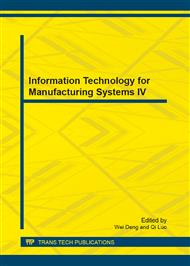[1]
D. Huang, E. A. Swanson, C. P. Lin, J. Schuman, W. Stinson, W. Chang, M. Hee, T. Flotte, K. Gregory, C. Puliafito, and et. al., Optical coherence tomography, Science 254(5035), 1178–1181 (1991).
DOI: 10.1126/science.1957169
Google Scholar
[2]
Nan Zeng, Yonghong He, Application of optical coherence tomography in nacre identification and characterization, MICROWAVE AND OPTICAL TECHNOLOGY LETTERS, Vol. 50, No. 2, February (2008).
DOI: 10.1002/mop.23124
Google Scholar
[3]
R. Y. Park, Y. C. Kim, and P. C. Kim, The comparative analyses of akoya pearls using the bio-bead nucleus and bead nucleus made from washboard shell, J. Korean Gems and Jewelry 1, 23–25 (2007).
Google Scholar
[4]
G. S. Zhang, X. D. Xie, S. Q. Qi, and P. C. Hu, X-ray diffraction study of nacre in shell of hyriopsis cumingii (LEA), J. Miner. Petrol. 22, 8–11 (2002).
Google Scholar
[5]
U. Wehrmeister, H. Goetz, D. E. Jacob, A. Soldati, W. Xu, H. Duschner, and W. Hofmeister, Visualization of the internal structures of cultured pearls by computerized X-ray microtomography, J. Geol. 31, 15–21 (2008).
DOI: 10.15506/jog.2008.31.1.15
Google Scholar
[6]
ZHANG Hong-ying, PENG Qi-cong. Adaptive image de noising model based on total variation[J]. Opto-Electronic Engineering, 2006, 33(3): 50-53.
Google Scholar
[7]
Rudin L 1,Osher S,Fatemi E Nonlinear total variation noise removal algorithms[J].Physiea D·1992, 6:259-268.
DOI: 10.1016/0167-2789(92)90242-f
Google Scholar
[8]
Auber G,VeseLA variantal method in image recovery[J].SlAM Journal of Numerical Analysis, 1997, 34(5):1948-(1954).
Google Scholar
[9]
ZHANG Hong-ying, PENG Qi-cong. Adaptive image de noising model based on total variation[J]. Opto-Electronic Engineering, 2006, 33(3): 50-53.
Google Scholar
[10]
Liu Xi'ang, Xia Jinsong, Yang Donghe, Liu Yingchun. Cocoon edge detection based on self-adaptive Canny operator. Computer Science and Software Engineering, 2008 International Conference on, 12-14 Dec. (2008).
DOI: 10.1109/csse.2008.1046
Google Scholar
[11]
Andrew Fitsgibbon, Narizio Pilu, Robert B Fisher, Direct least square fitting of ellipse", John, "A Computational Approach to Edge Detection, IEEE Transactions on Pattern Analysis and Machine Intelligence, 1999, 21(5), pp.476-480.
DOI: 10.1109/34.765658
Google Scholar
[12]
Canny J F. A computational approach to edge detection. IEEE Transactions on Pattern Analysis and Machine Intelligence, 1986, 8 (6): 679-698.
DOI: 10.1109/tpami.1986.4767851
Google Scholar


